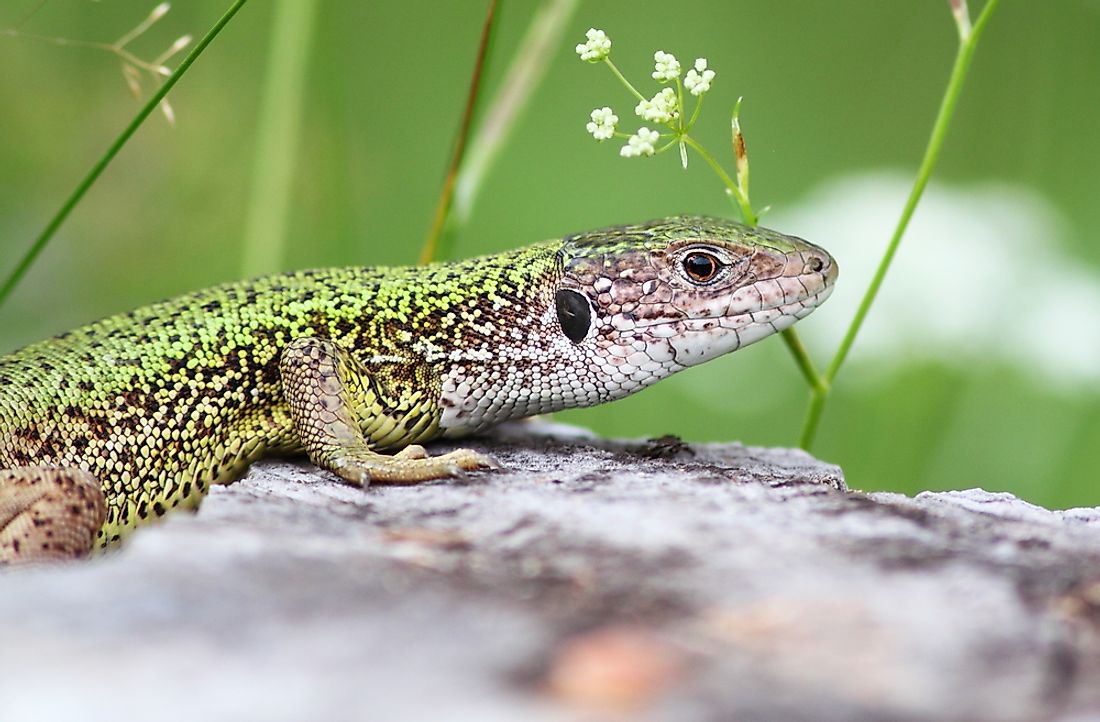Reptiles Of Kazakhstan

Kazakhstan is found in the north of central Asian nations. It borders China to the east, Russia to the north and the Caspian Sea partly to the west. There is a significant topographical variation in the country. However, most of the country lies between 200 and 300 m above sea level. This range is good for many reptiles’ survival hence making the country home to various types of reptiles. However, human activity has been rampant in destroying the environment. As this occurs, the reptiles become threatened hence leading to conservation of some of them. The Russian Tortoise and Meadow Viper are some of the most threatened reptiles in the country.
The Russian Tortoise
The reptile Agrionemys horsfieldii is a small tortoise species that ranges between 13 and 25 cm in length. The males are smaller than the females and have longer tails tucked to their sides. The tortoises have four toes on their feet. Their colors vary, but their shells are usually black or brown. They feed on wildflowers and weeds, showing a herbivorous behavior. Breeding starts with courtship where the male head bobs, circles or bites the female’s forelegs. When she submits, the male mounts on her back from behind and their mating involve squeaking sounds. The Russian Tortoises are common in dry and arid lands. However, there are many of these reptiles kept in captivity in many parts of the country they keep the animals outside throughout the year. However, in cooler parts of the country they are kept outside during the warm months.
Meadow Viper
The reptile Vipera ursinii is a small type of snake with an average of 40-50 cm. It is the smallest viper in its region. It has a narrow head and a thick body, giving it a rough appearance. It is found across the country with no known subspecies. The species is vulnerable due to the destruction of their habitat due to changes in agriculture and climate, especially in the mountain areas. The meadow viper’s diet consists of animal species such as lizards, birds, spiders, and beetles. However, due to seasonal variations, the diet is predominantly invertebrates between July and August while vertebrates are important for the rest of the year. They use poison to kill their prey.
Sand Lizard
The lizard Lacerta agilis is sexually dimorphic with both sexes having dorsal and lateral strips of markings. However, the males have finer markings than the females. They can reach about 25 cm in length. Their habitat mostly includes the lowlands where sand dunes occur. They can also live in man-made habitats such as field boundaries, railways, and roadsides. The females lay their eggs in the loose sand where the warmth incubates them. They reduce inbreeding depression by breeding with distant relatives. The lizards are regarded as threatened, and laws guard them against exploitation.
Caspian Whipsnake
Dolichophis caspius is perhaps the largest snake species in Europe. In Kazakhstan, it is mainly found on the western side of the country. The snake is non-venomous and is active during the day. Their habitats are distributed along river lowlands. They like grassy areas with few shrubs but can also stay in wet areas. Its diet consists of small vertebrates where it bites them ferociously without a warning. The males are larger than females. The male holds the female by the neck during breeding. The act starts at about three years where the female lays between 5 and 18 eggs in one clutch. The young ones resemble the adults hence do not undergo changes in their life cycle. The snake is not threatened, and hence there are no legal measures to conserve them.
The Reptiles Of Kazakhstan
| Native Reptiles of Kazakhstan | Scientific Name |
|---|---|
| Sand Lizard | Lacerta agilis |
| Sheltopusik | Pseudopus apodus |
| European Pond Terrapin | Emys orbicularis |
| Diadem Snake | Spalerosophis diadema |
| Russian Tortoise | Agrionemys horsfieldii |
| Caspian Whipsnake | Dolichophis caspius |
| Smooth Snake | Coronella austriaca |
| Meadow Viper | Vipera ursinii |
| Viviparous Lizard | Zootoca vivipara |
| Desert Lidless Skink | Ablepharus deserti |







